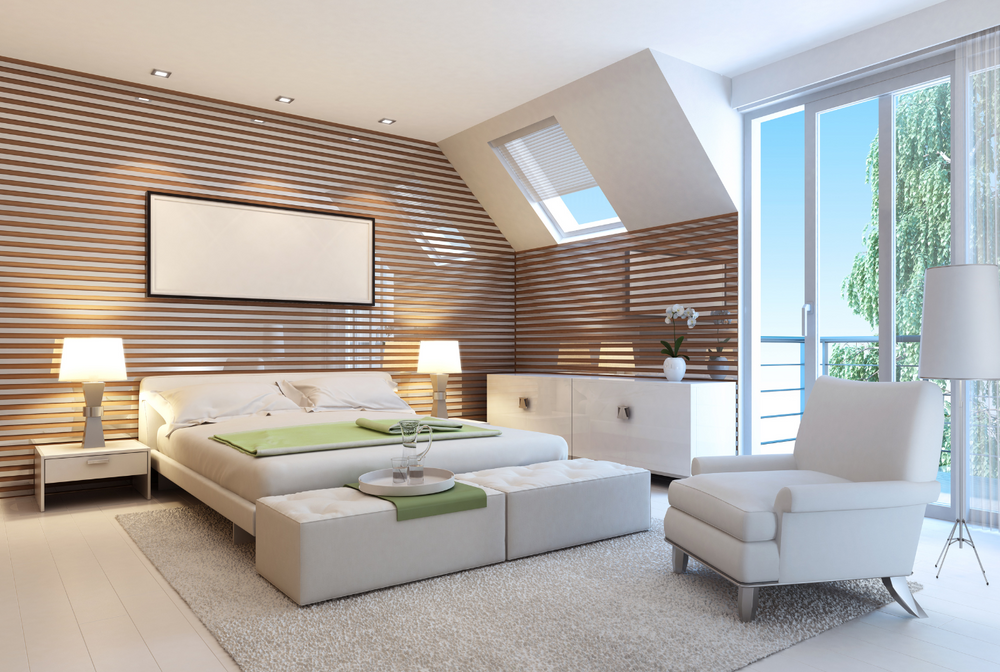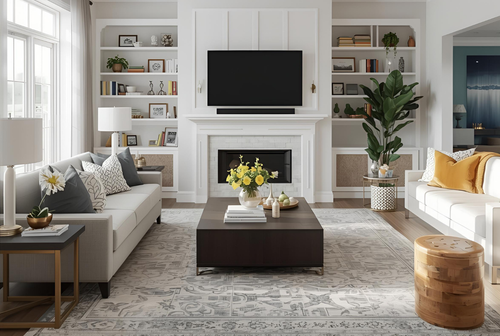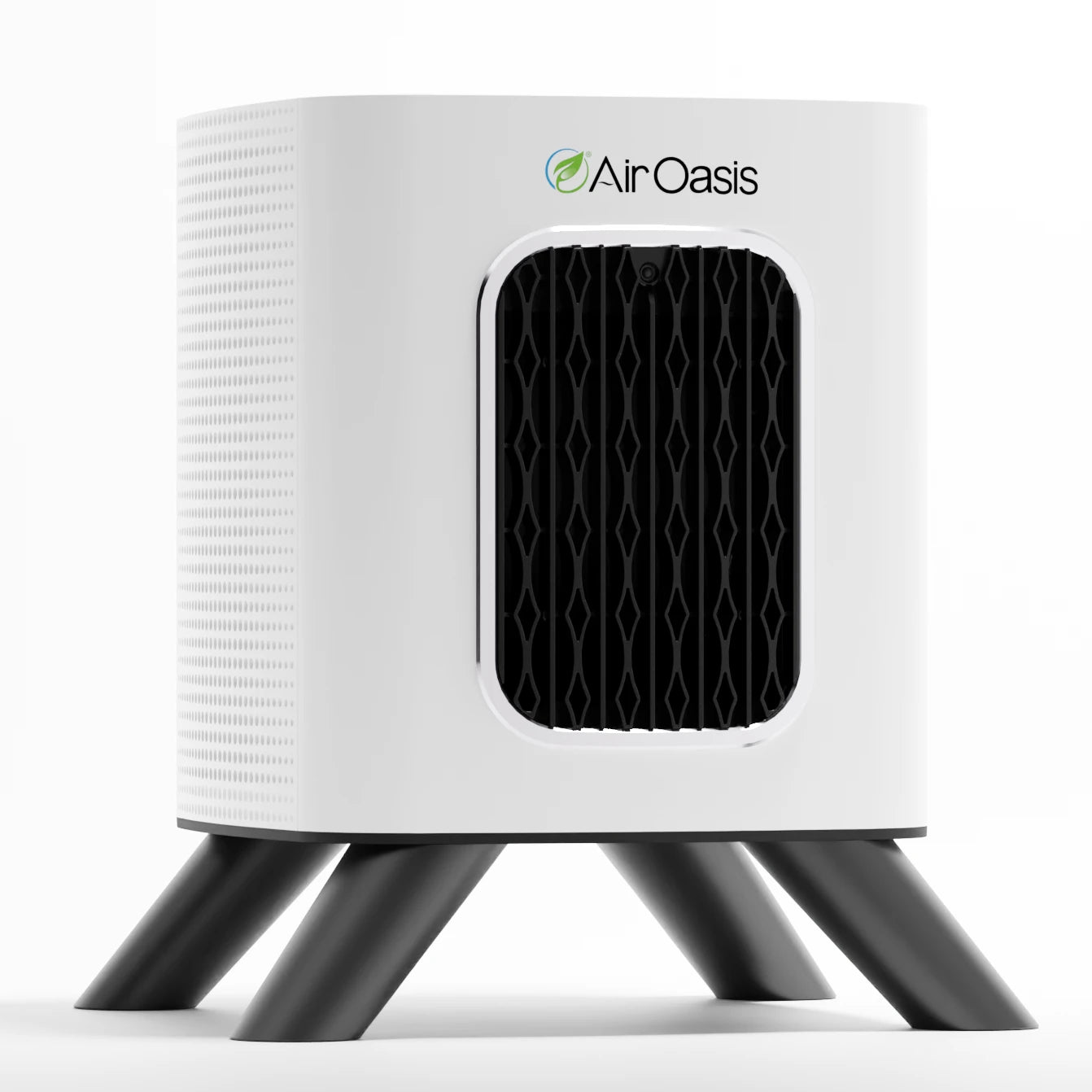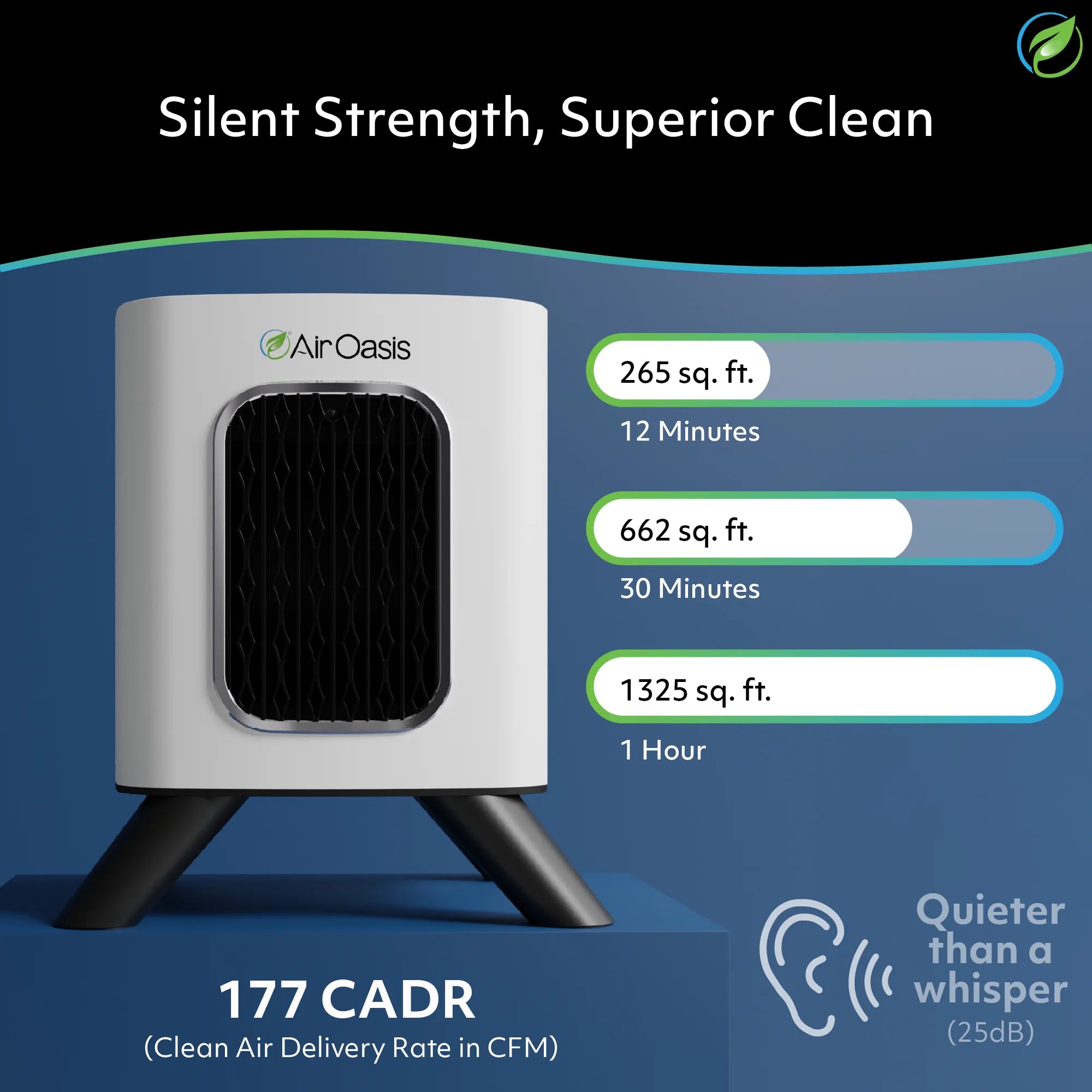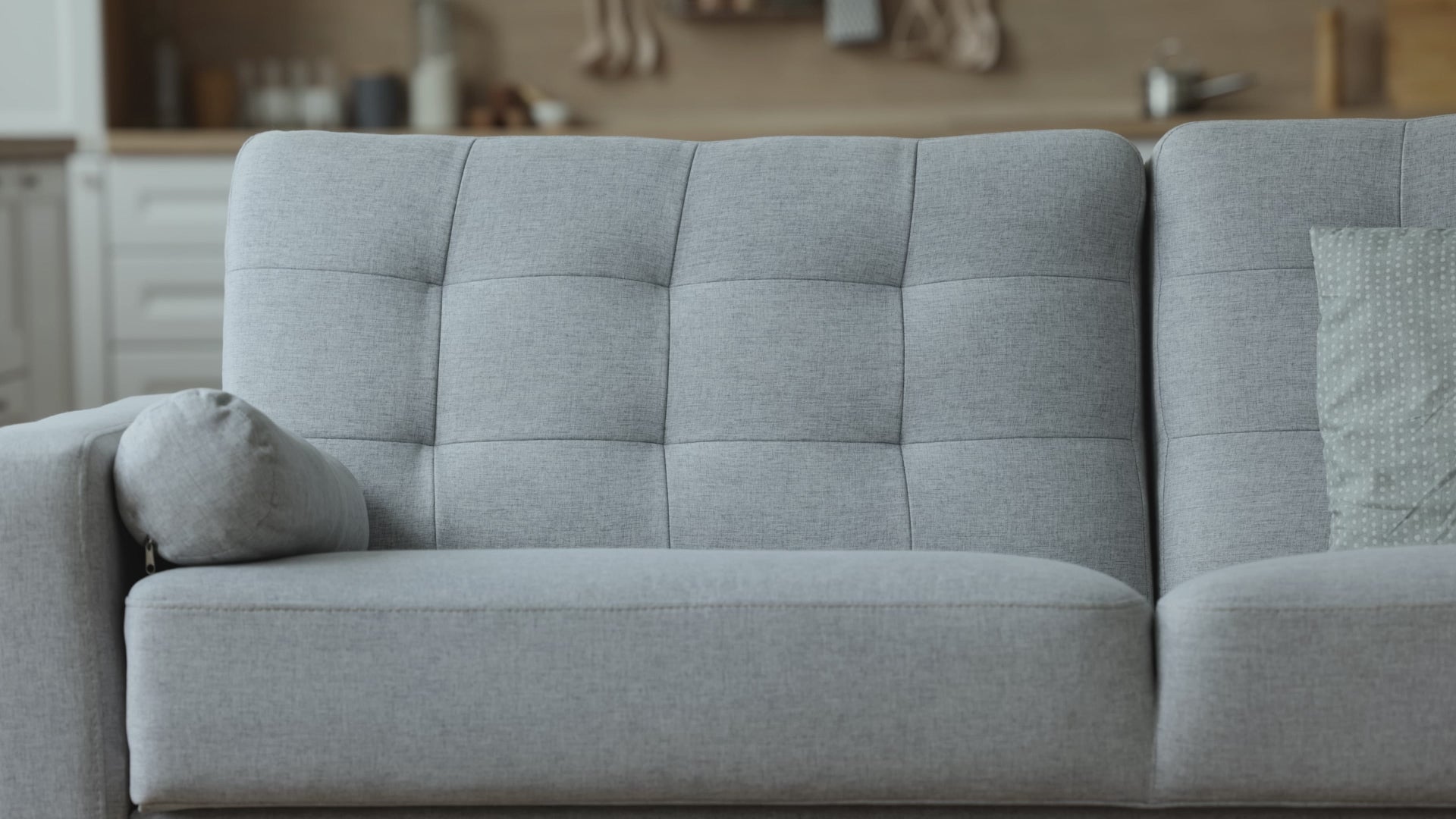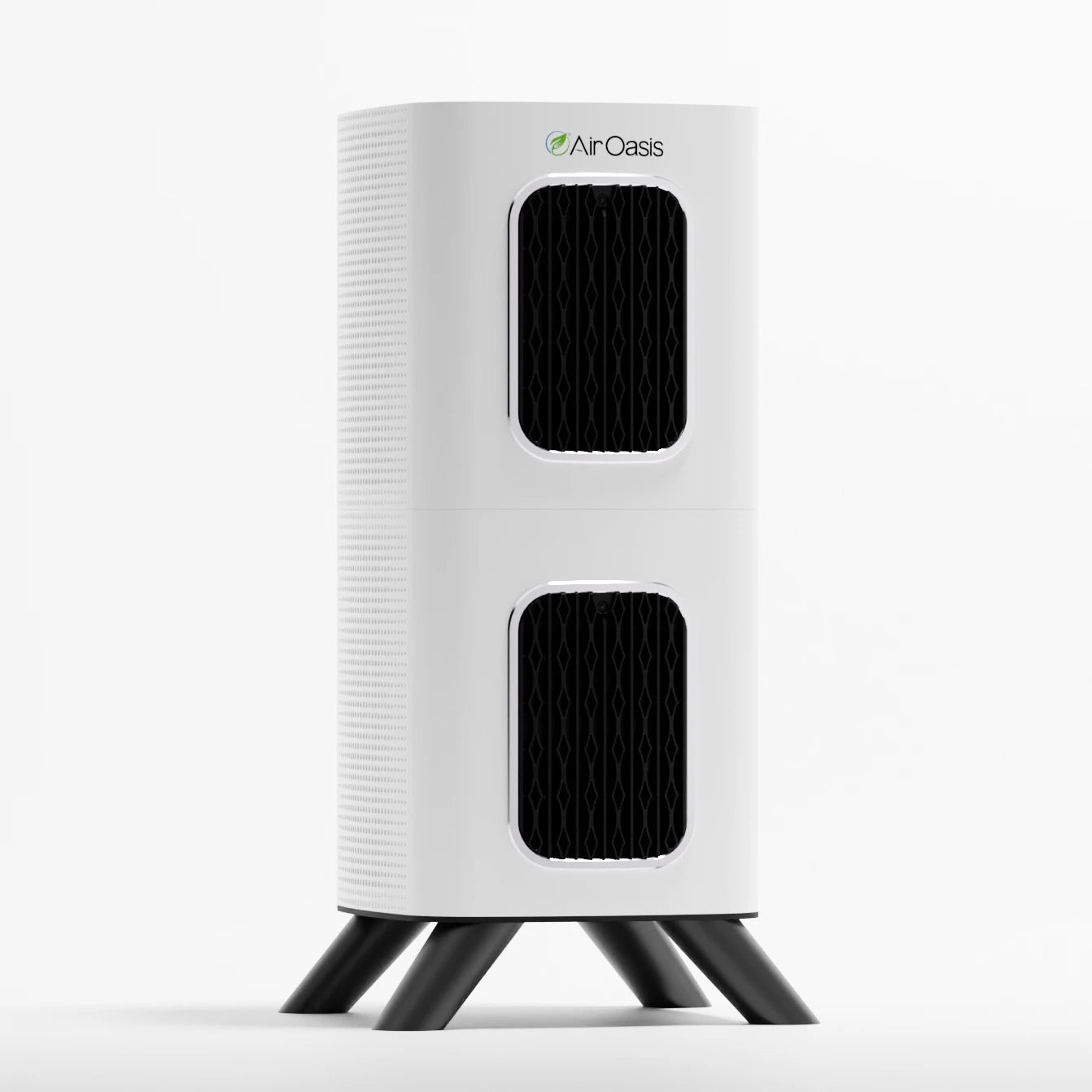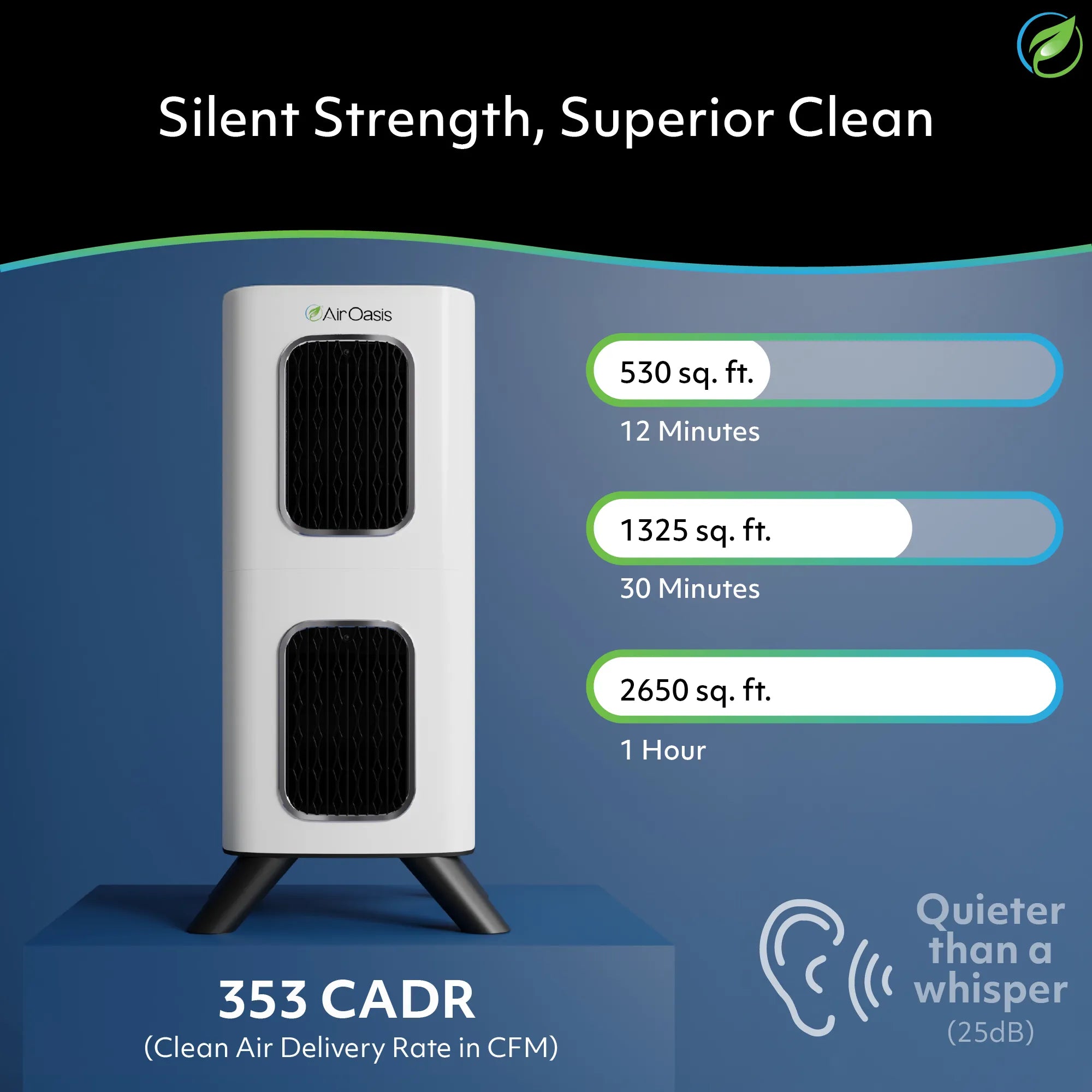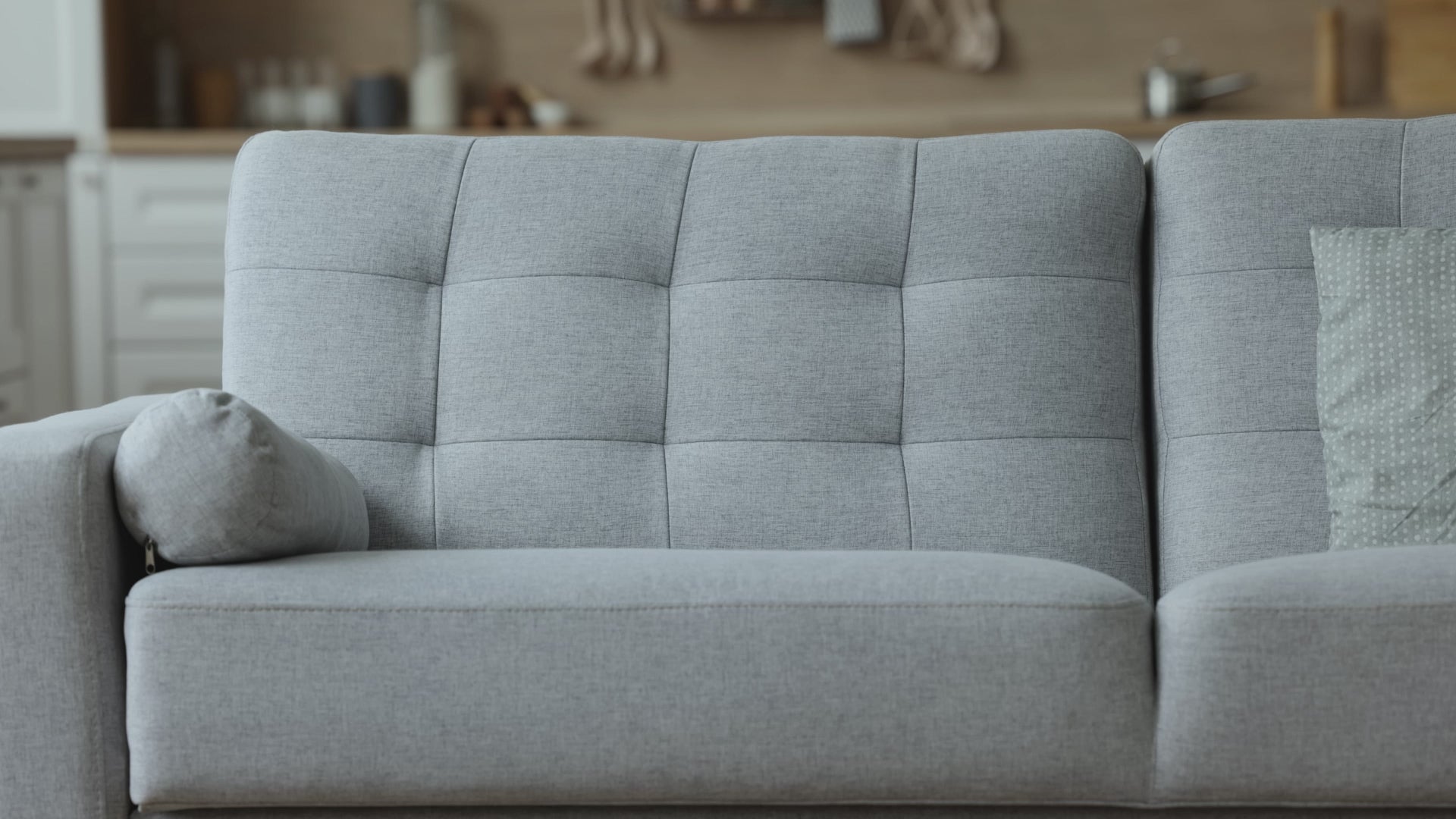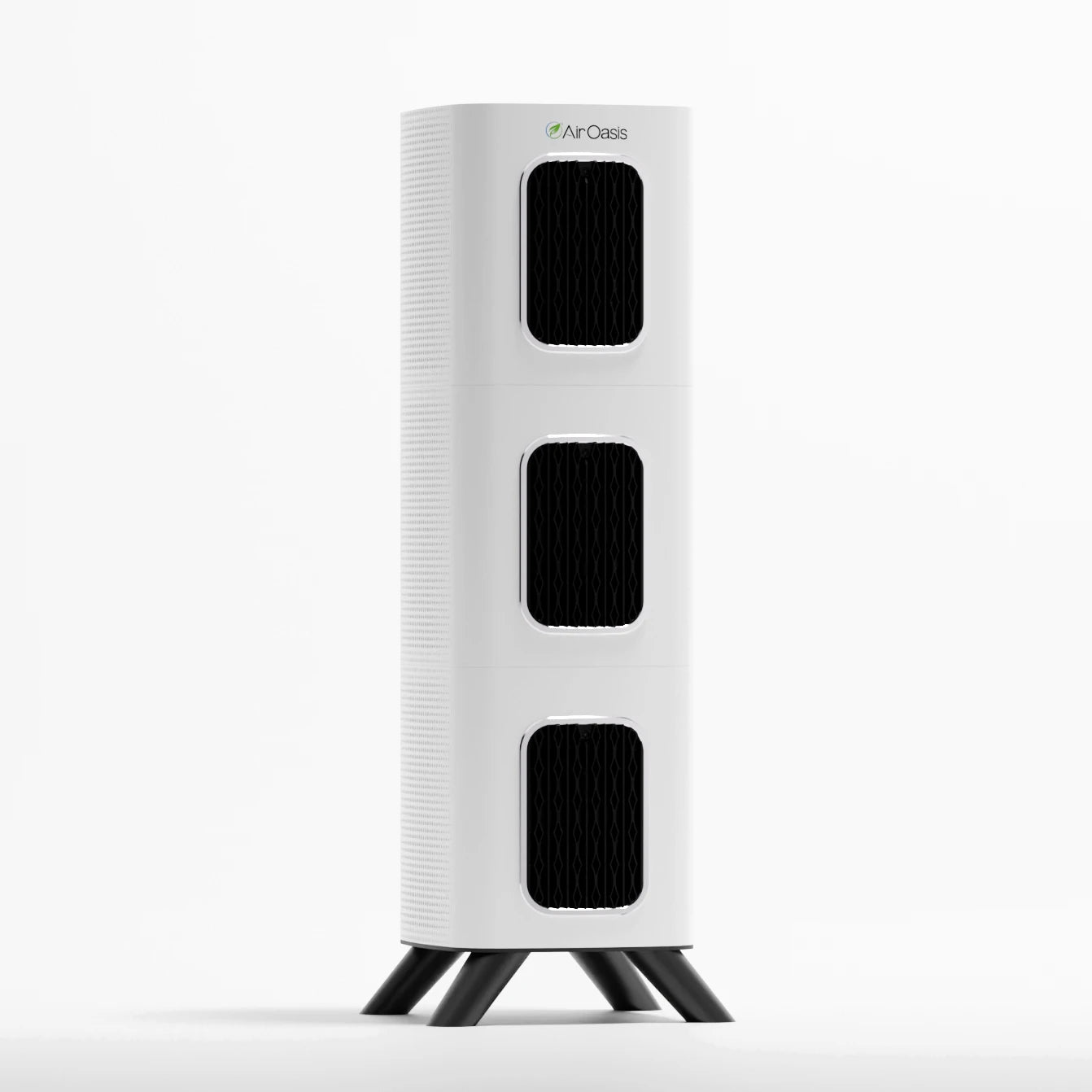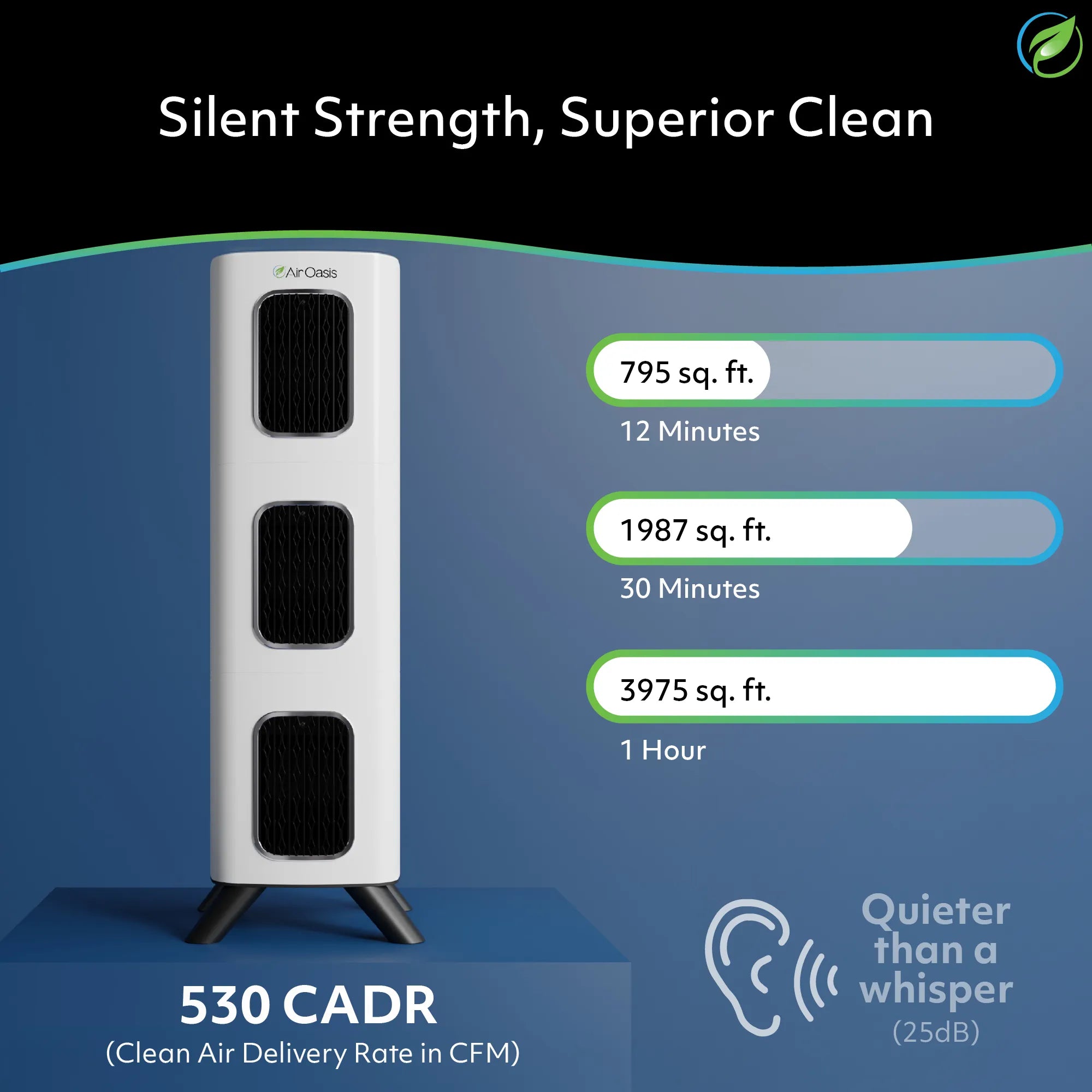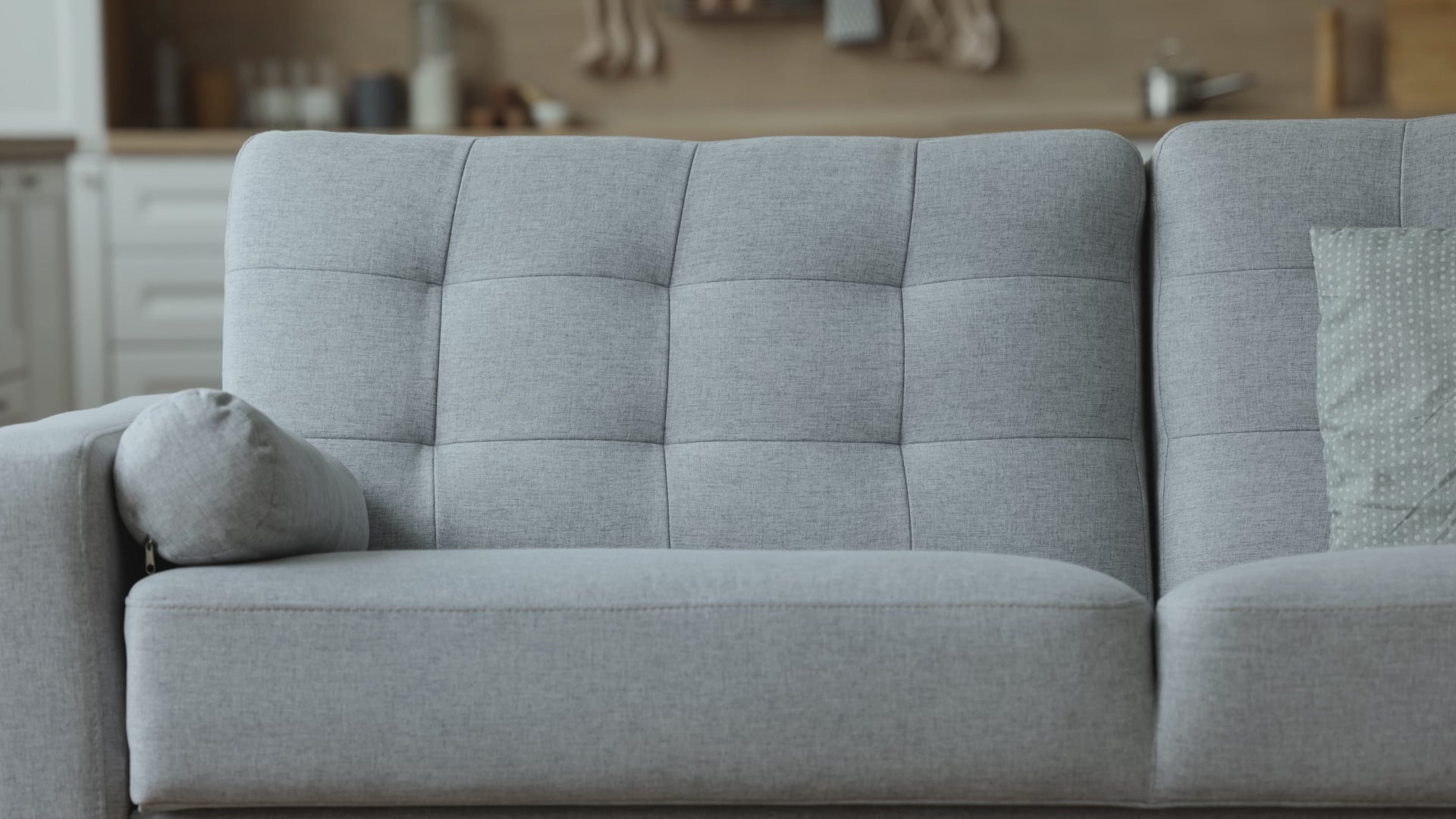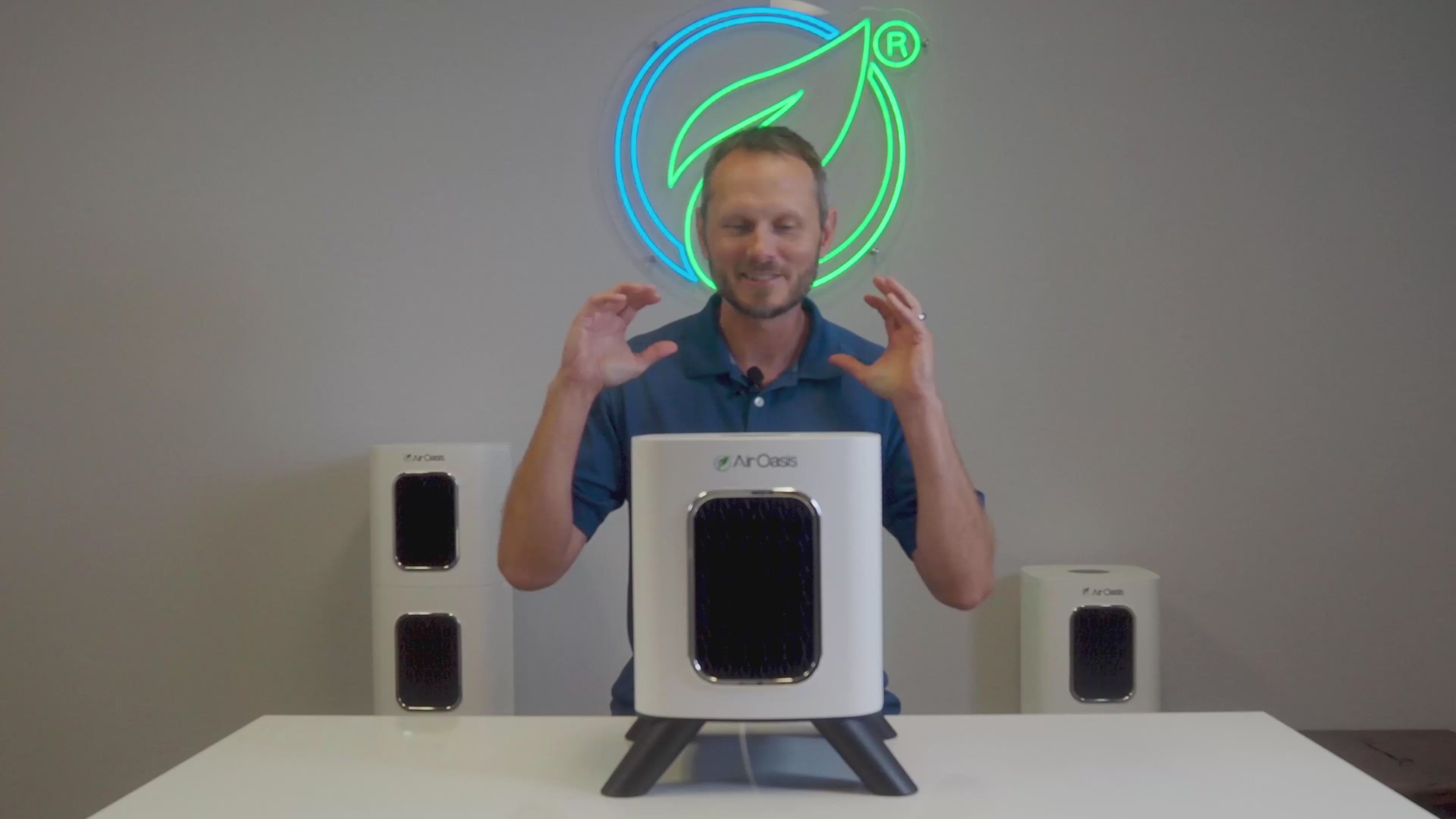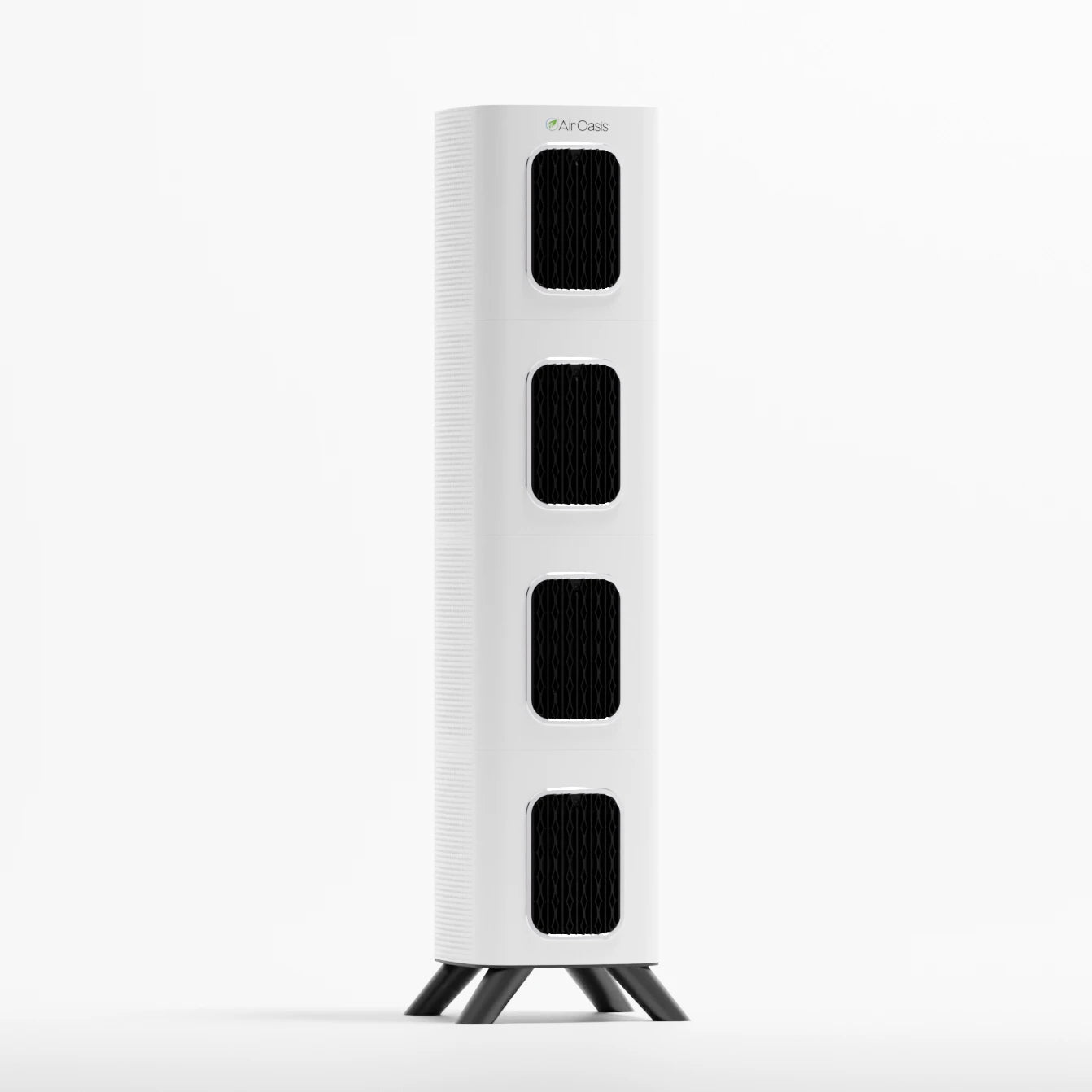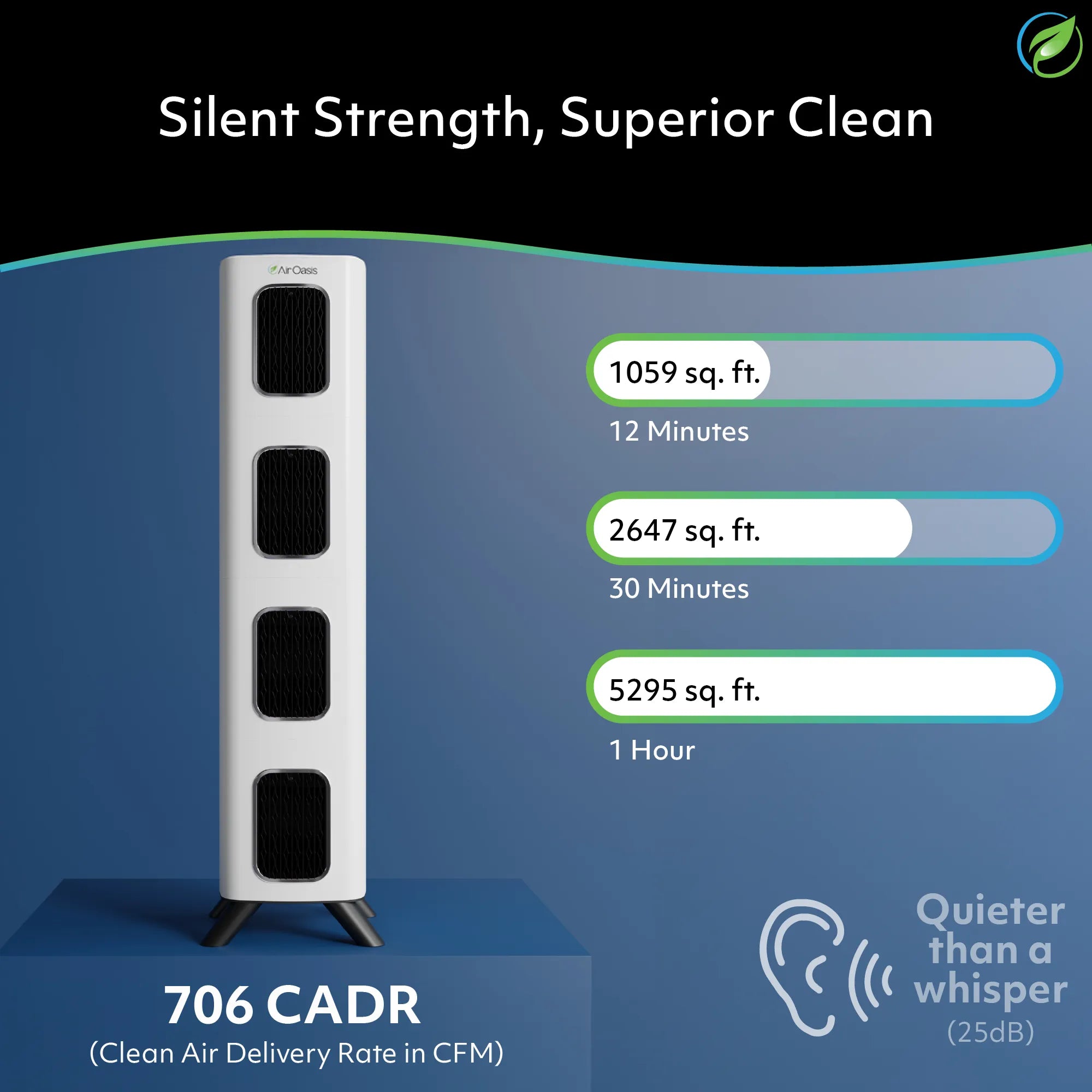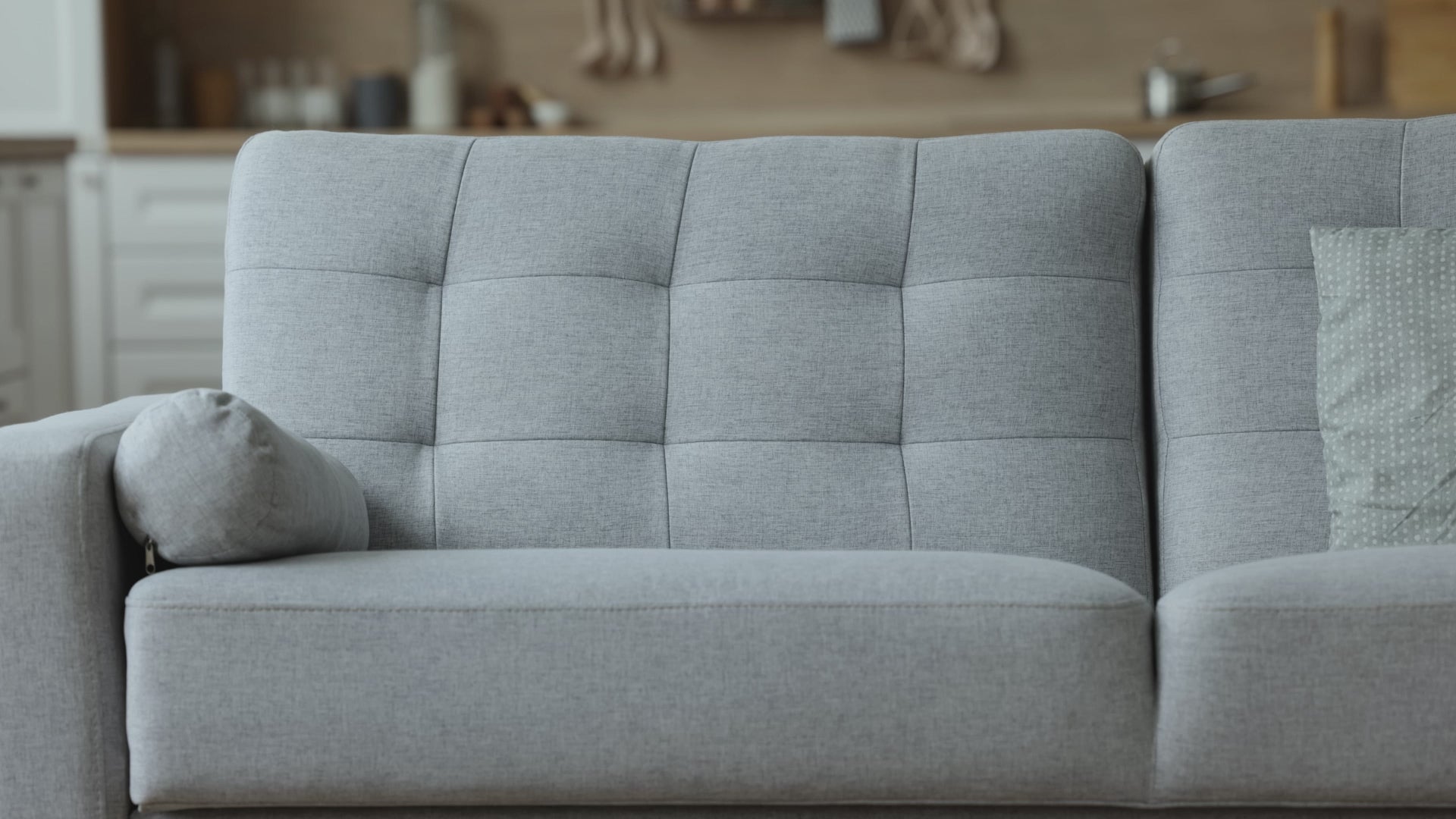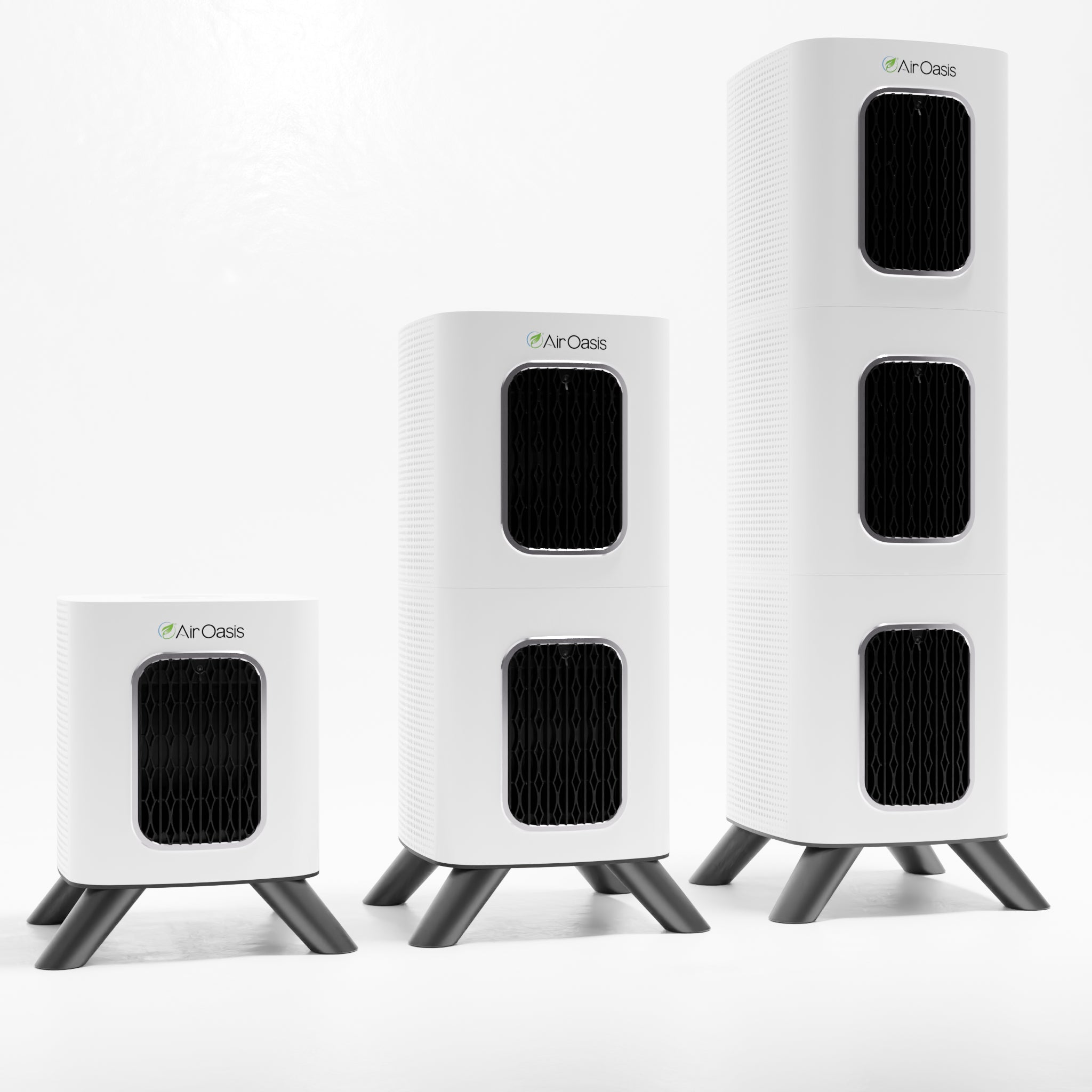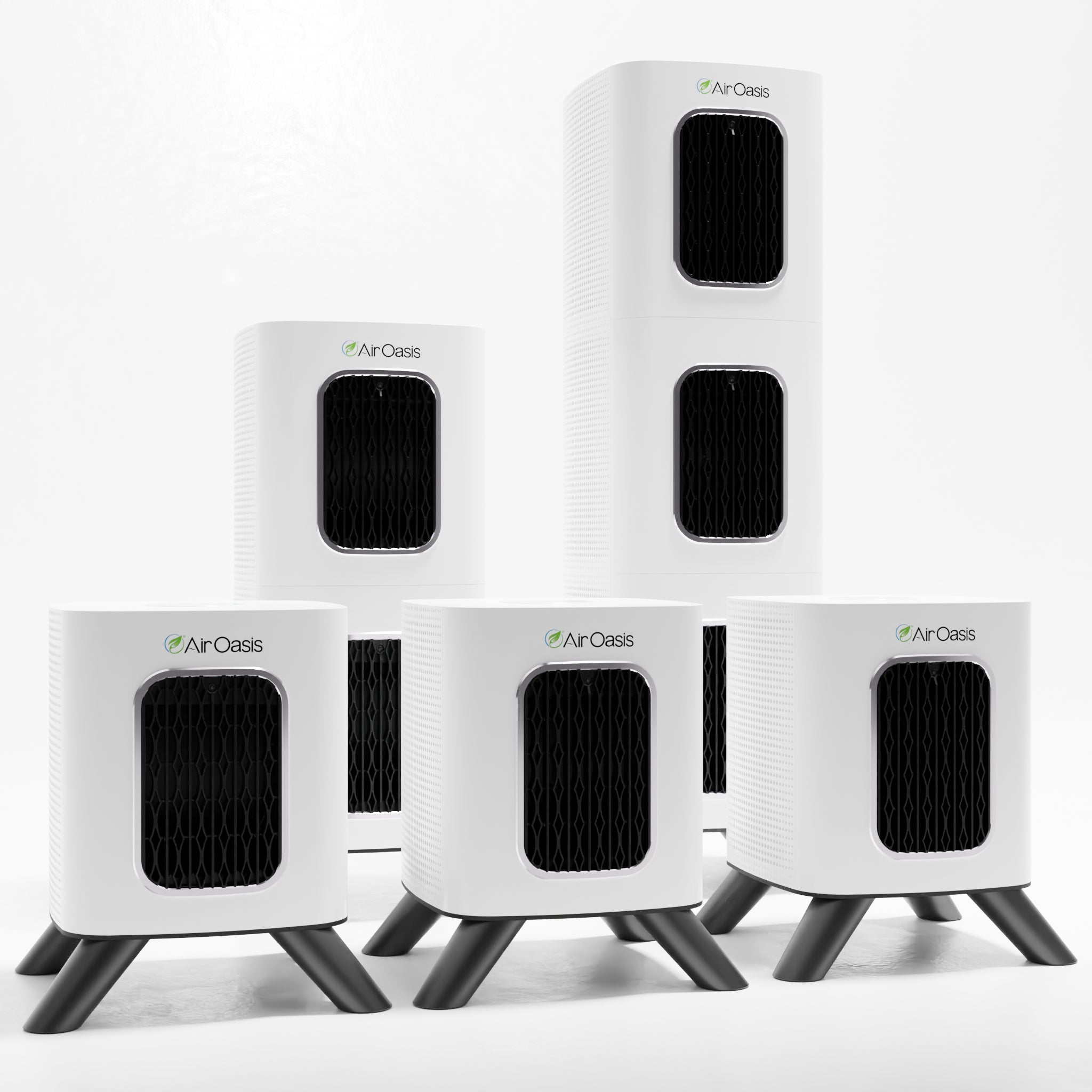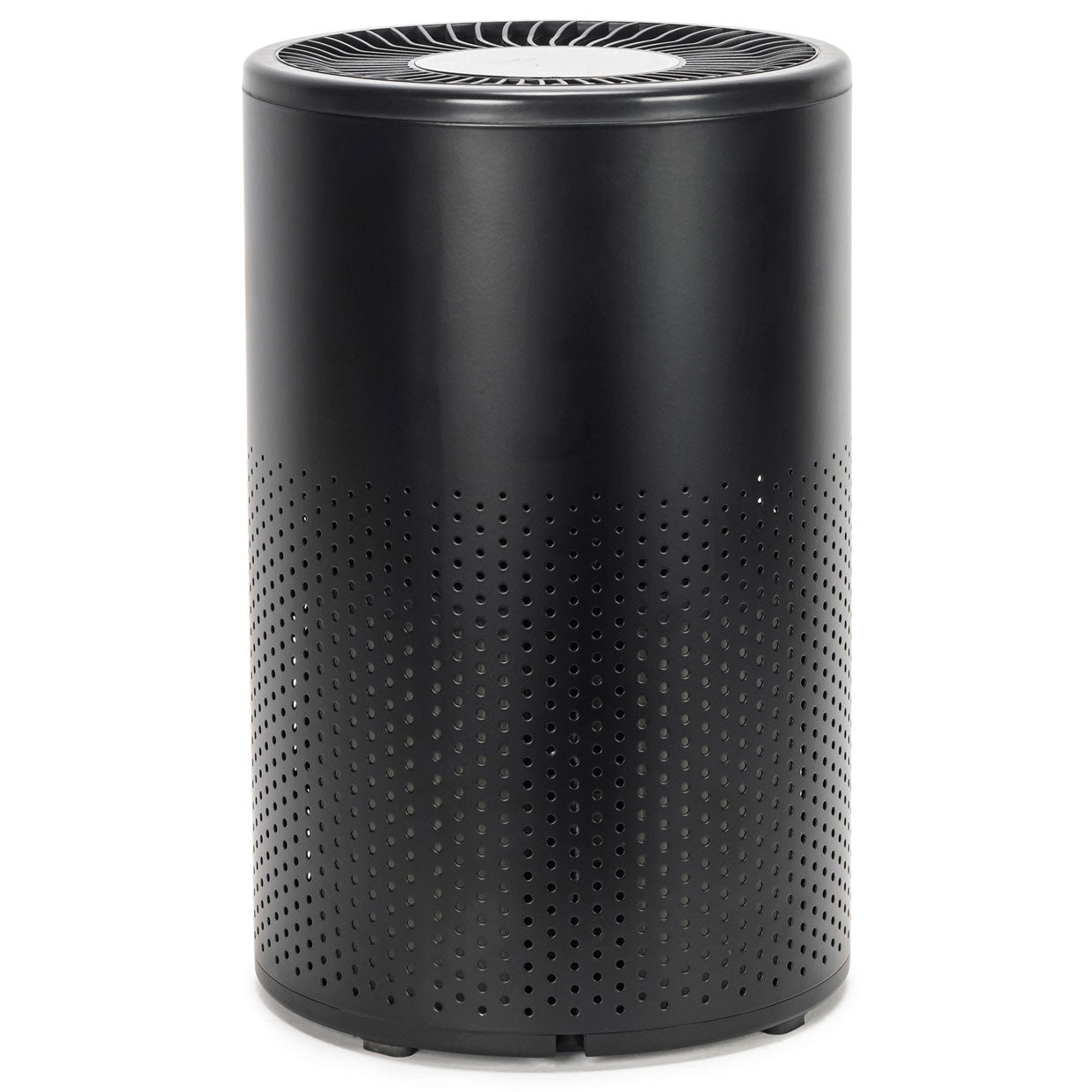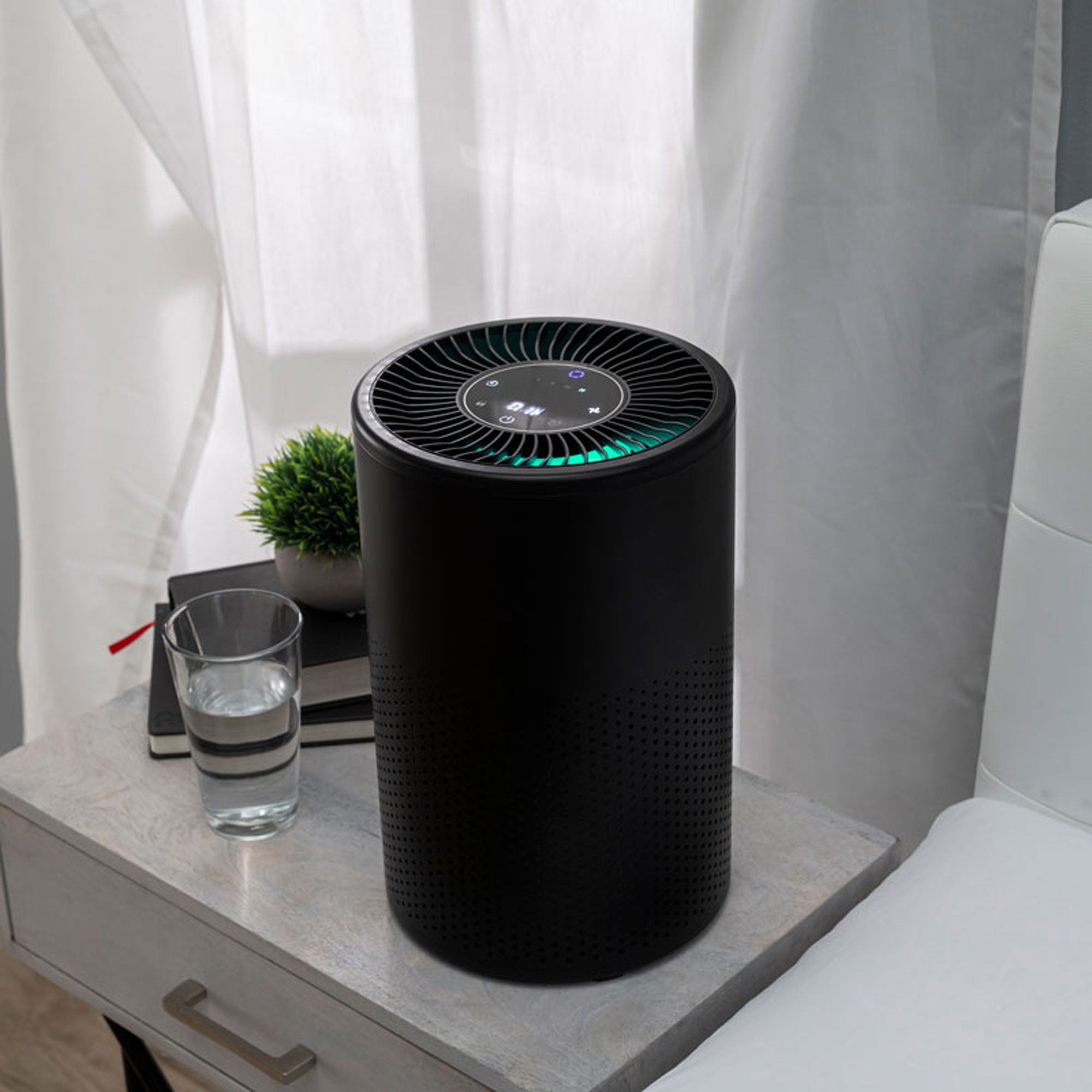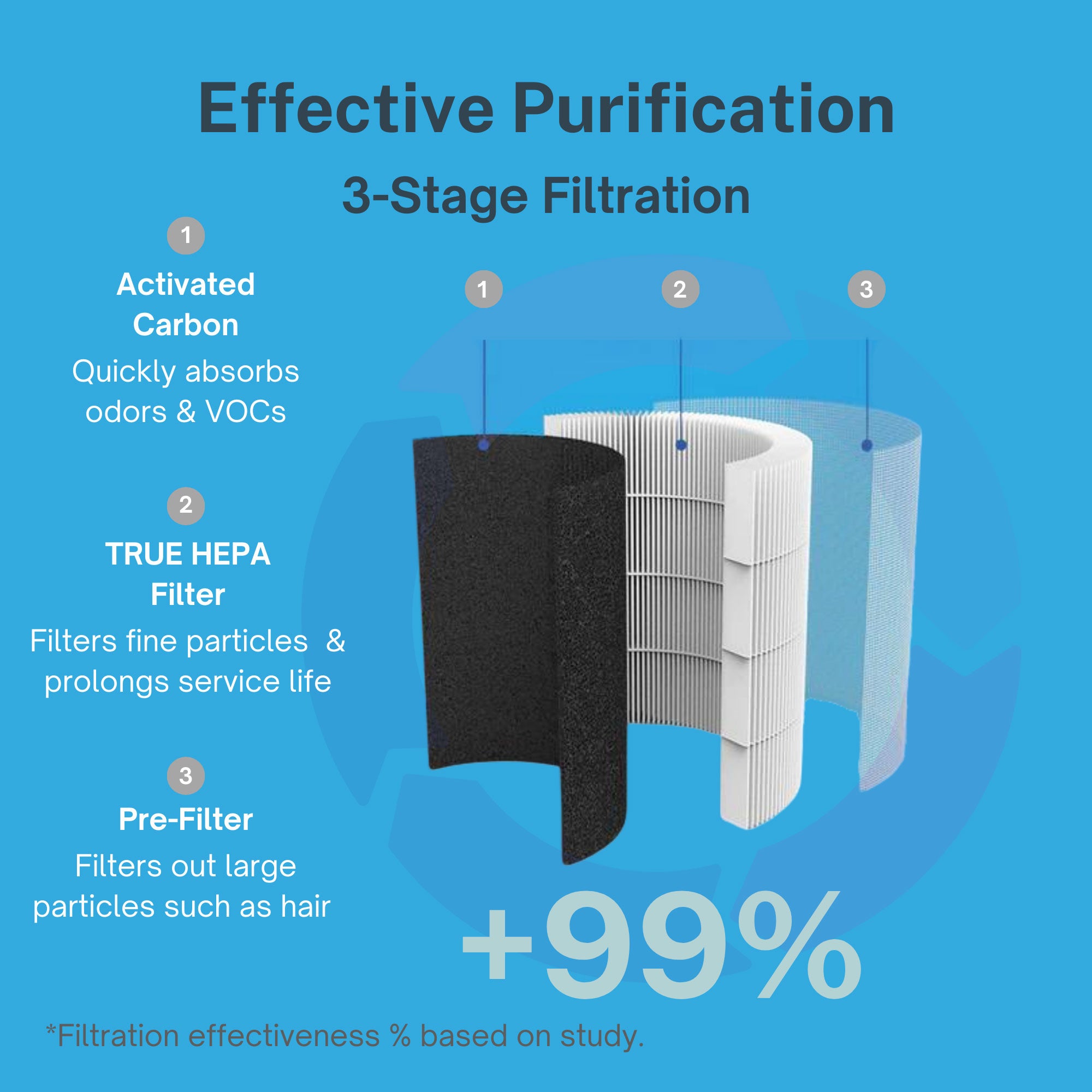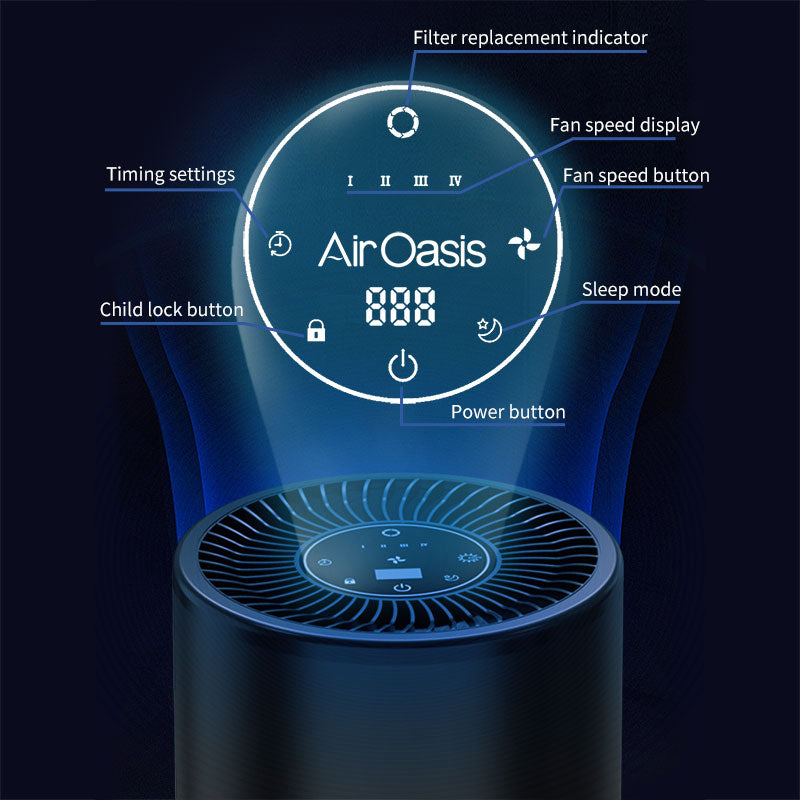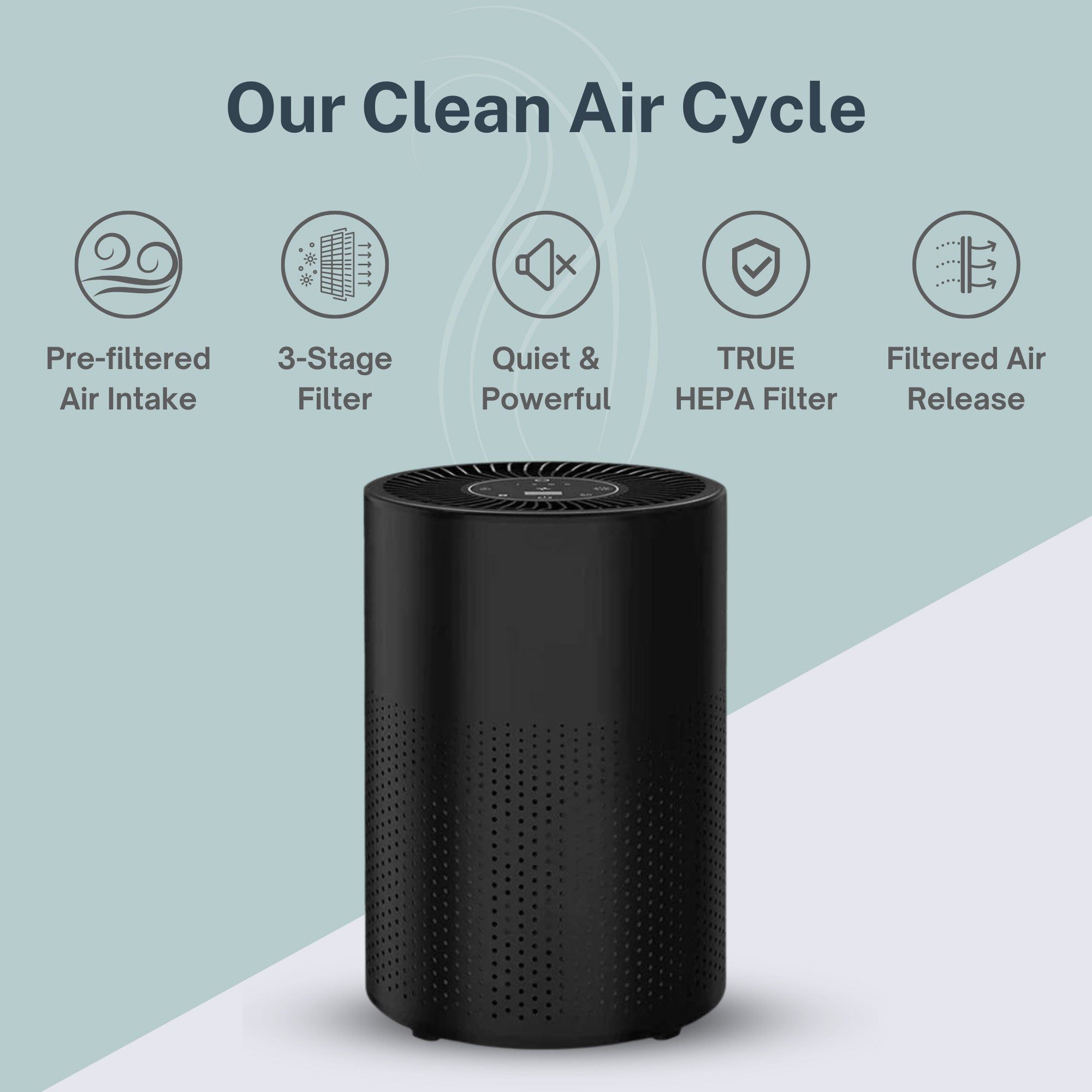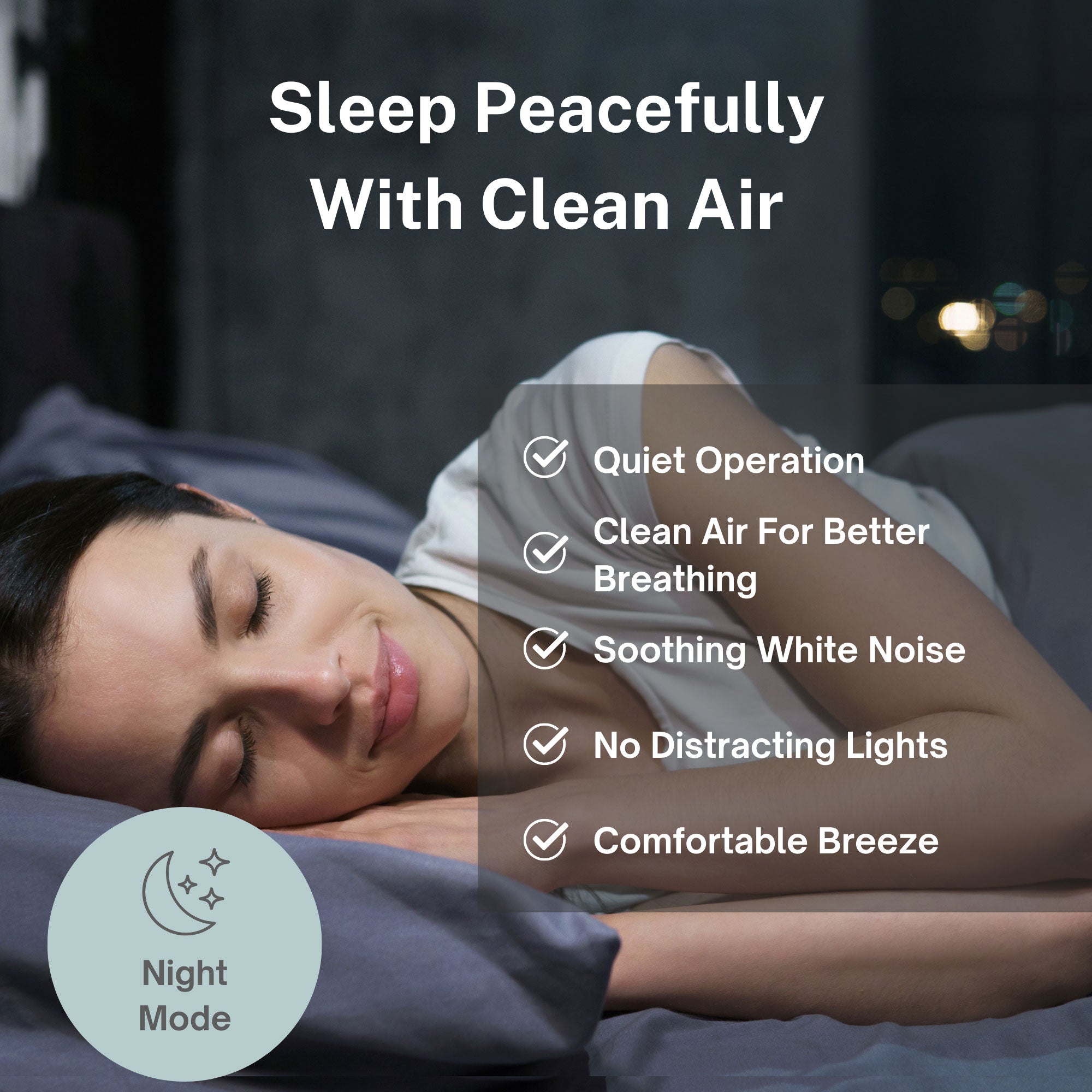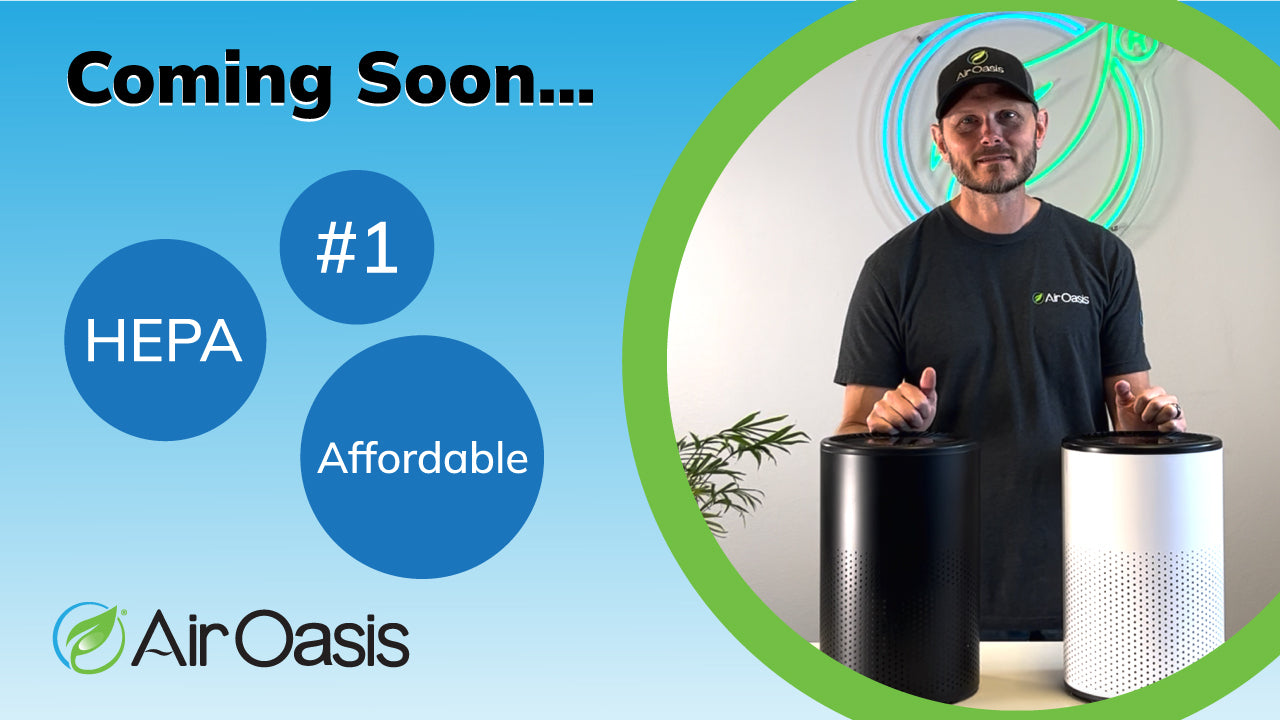Air ionizers have generated significant controversy over safety concerns, leaving many consumers confused about whether these devices help or harm indoor air quality. The answer isn't simple—it depends entirely on the type of ionization technology used and whether the device generates harmful ozone as a byproduct.
Understanding the difference between safe and unsafe ionization technologies helps you make informed decisions about air purification without falling victim to either unfounded fears or misleading marketing claims.
What Air Ionizers Actually Do
Air ionization represents a 100-year-old technology that works by releasing charged particles (ions) into the air. These ions interact with airborne contaminants including viruses, bacteria, mold spores, allergens, volatile organic compounds (VOCs), and odors, causing them to clump together and fall from the air or become deactivated.
Two Main Types of Ionization
Negative Ion Generators release only negatively charged ions that attach to airborne particles, giving them electrical charges that cause particles to clump together and become heavy enough to fall from the air.
Bi-Polar Ionization uses both positive and negative charging poles to split water vapor into hydrogen ions (positive) and oxygen ions (negative). When these ions recombine to reform water molecules, they attract and capture airborne particles in the process.
The safety concerns around ionizers primarily relate to ozone generation—some ionization technologies produce harmful ozone as a byproduct, while others operate without generating dangerous ozone levels.
The Ozone Safety Concern
The primary health risk associated with some air ionizers is ozone production. Ozone, a highly reactive gas, can cause respiratory irritation, worsen asthma, and lead to long-term lung damage when present at elevated indoor concentrations.
Dangerous Ionizer Characteristics
- Produce ozone concentrations above 0.05 ppm
- Use high-voltage electrical discharge that creates ozone
- Market ozone generation as a beneficial feature
- Lack CARB (California Air Resources Board) certification
Safe Ionizer Characteristics
- CARB-certified for ozone-free operation
- Controlled ionization that doesn't produce harmful ozone levels
- Third-party testing verification of safety claims
- Proper engineering that prevents excessive electrical discharge
The Air Oasis iAdaptAir systems utilize Bi-Polar Ionization technology that has been specifically designed and tested to operate without generating harmful ozone levels, earning CARB certification for consumer safety.
Research-Backed Benefits of Safe Ionization
When properly implemented without ozone generation, ionization technology offers several documented health and wellness benefits that explain why hospitals, schools, and other facilities choose ionization systems.
Proven Ionization Benefits
- Pathogen Deactivation: Research demonstrates that ions can deactivate viruses and bacteria in both air and on surfaces
- Allergen Reduction: Negative ions cause allergens like pollen and dust to clump together and fall from breathing zones
- VOC Neutralization: Ionization helps break down volatile organic compounds that filtration alone cannot address
- Odor Elimination: Ions interact with odor-causing molecules to neutralize unpleasant smells
Psychological and Wellness Effects: Studies suggest that negative ion exposure may improve psychological health, productivity, and overall well-being. This explains why people often feel refreshed near waterfalls, oceans, and after thunderstorms—natural environments with high negative ion concentrations.
The key is choosing ionization systems that provide these benefits without the safety risks associated with ozone-generating devices.
How Air Oasis Ensures Safe Ionization
Air Oasis addresses ionizer safety concerns through rigorous engineering and testing that ensures their Bi-Polar Ionization technology operates safely for continuous home use.
Air Oasis Safety Certifications
- CARB Certified: Meets California's strict ozone emission standards
- Third-Party Lab Tested: Independent verification of safety and effectiveness claims
- Controlled Ion Output: Engineered to produce beneficial ions without harmful ozone
- Continuous Operation Safety: Designed for 24/7 use without health risks
According to Air Oasis product documentation, their iAdaptAir systems combine Bi-Polar Ionization with HEPA filtration, activated carbon, silver ion technology, and UV-C light to provide comprehensive air purification without ozone generation concerns.
This multi-technology approach allows the Air Oasis iAdaptAir systems to deliver the benefits of ionization while maintaining the safety standards required for home use around children, elderly individuals, and those with respiratory sensitivities.
Professional Applications Demonstrate Safety
The widespread use of ionization technology in hospitals, schools, and commercial facilities demonstrates that properly engineered ionization systems can operate safely in environments where health protection is paramount.
Medical Facility Use: Hospitals use ionization systems not only for air purification but also for sanitizing medical equipment like ventilator tubes. The ability to harness electrostatic charges for both air and surface sanitation makes ionization valuable for infection control.
Educational Environment Applications: Schools implement ionization systems to reduce airborne pathogen transmission and improve indoor air quality for students and staff. The technology's effectiveness against viruses and bacteria makes it particularly valuable in shared spaces.
Industrial Applications: High-tech manufacturers rely on ionization systems to control static electricity during sensitive manufacturing processes, demonstrating the technology's precision and reliability when properly engineered.
These professional applications require strict safety standards, confirming that quality ionization systems can operate safely when designed and manufactured correctly.
Red Flags: Ionizers to Avoid
Certain ionizer characteristics indicate potentially unsafe devices that consumers should avoid to protect their health.
Warning Signs of Unsafe Ionizers
- Market ozone generation as a beneficial feature
- Lack CARB certification or safety testing documentation
- Produce sharp, metallic odors during operation
- Cause respiratory irritation or throat discomfort
- Make unsubstantiated health claims about ozone benefits
Unsafe Marketing Claims
- "Ozone kills all germs and bacteria"
- "Hospital-grade ozone treatment for your home"
- "Natural ozone purification"
- "Ozone therapy for better health"
These claims indicate devices that intentionally generate ozone at levels that can harm respiratory health, particularly in enclosed indoor spaces.
Choosing Safe Ionization Technology
Safe air ionizers provide the benefits of ionization technology without the health risks associated with ozone generation.
Safety Checklist for Ionizer Selection
- CARB certification for ozone-free operation
- Third-party testing verification
- Clear documentation of ion output and ozone levels
- Combination with proven filtration technologies
- Positive reviews from users with respiratory sensitivities
Additional Safety Features
- Ability to disable ionization function if needed
- Multiple air cleaning technologies beyond ionization alone
- Professional-grade construction and safety standards
- Comprehensive warranty and customer support
The Air Oasis air purification systems meet all these safety criteria while providing the comprehensive air cleaning that combines ionization benefits with proven filtration technologies.
Making Informed Decisions About Ionizer Safety
Air ionizers are not inherently bad for you—the safety depends entirely on the quality of engineering, ozone output levels, and adherence to established safety standards. Properly designed ionization systems provide significant air quality benefits without health risks.
The key lies in choosing devices with verified safety certifications and avoiding products that generate ozone or make unsubstantiated health claims. Quality manufacturers invest in proper engineering and testing to ensure their ionization technology operates safely for continuous home use.
Research supports the benefits of negative ion exposure for health and wellness, but only when achieved through properly engineered systems that don't compromise indoor air safety through ozone generation.
The Bottom Line on Ionizer Safety
Safe air ionizers provide proven benefits for indoor air quality when engineered properly and certified for ozone-free operation. The technology itself isn't dangerous—poor implementation and lack of safety standards create the health risks that give ionizers a bad reputation.
Professional-grade ionization systems that combine multiple air cleaning technologies offer the best approach for achieving comprehensive air purification while maintaining safety for all family members.
Ready to experience the benefits of safe, certified ionization technology? Shop Air Oasis today for CARB-certified air purification systems that provide ionization benefits without ozone safety concerns.

